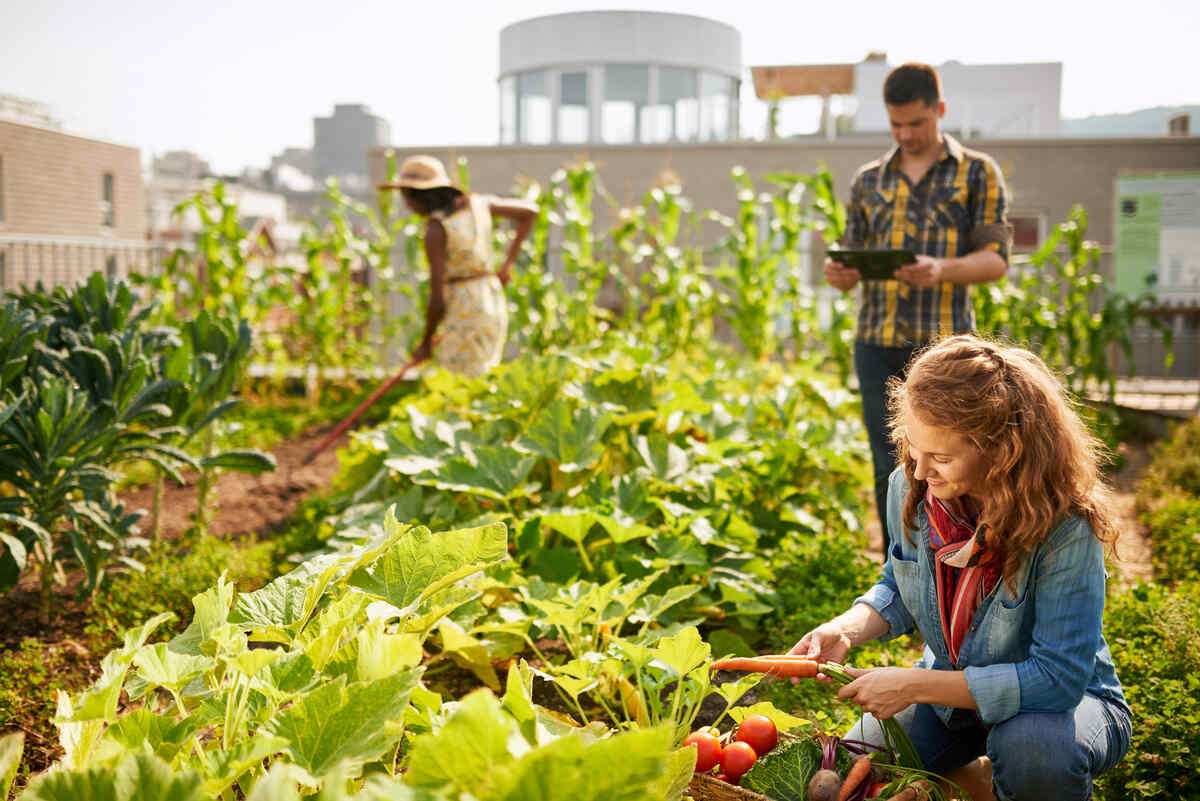Examine This Report about City Blooming
Table of ContentsCity Blooming Fundamentals ExplainedThe Greatest Guide To City BloomingThe smart Trick of City Blooming That Nobody is DiscussingCity Blooming for BeginnersSome Known Facts About City Blooming.
Fascinated in growing food for sale in the City of Chicago? Below is a list of regularly asked questions regarding the guidelines and laws that cultivators should take into consideration when preparing a metropolitan agriculture job.
The zoning modification does not change any type of various other codes taking care of composting, building permits, purchasing or leasing City owned building, business licenses or ecological contamination. There are existing codes that manage these concerns and they remain in full effect and might apply to your task. Community yards are usually had or handled by public entities, public companies or community-based organizations and kept by volunteers.
Urban ranches expand food that is intended to be offered, either on a not-for-profit or for-profit basis. Because of their industrial purpose, city ranches require a service certificate. Yes. A community yard is permitted to market excess generate that was expanded on website if the sales are accessory or secondary to the garden's key function described over.
The smart Trick of City Blooming That Nobody is Talking About
Composting is permitted however only for plant product that is generated and used on site. The quantity of garden compost product can not exceed 25 cubic backyards at any provided time according to the requirements in 7-28-715 of the City's Municipal Code. Yes. Because the soil at a lot of new yard sites needs amending, compost, dirt, wood chips, or other materials can be gotten to construct or boost the expanding space - landscaping.

If a building permit is needed then the hoophouse will be taken into consideration an accessory structure. You can discover more concerning the building authorization requirements by calling the Division of Buildings. The 25,000-square-foot size limit is planned to stop a single neighborhood yard from controling a provided block or interfering with the block's existing property or industrial character.
The restriction does not put on yards situated in Public Open Room (POS) districts. Can there be greater than one neighborhood yard that is 25,000 square feet on a single block? Yes. The size limitation puts on individual yards, not to private blocks. No. Fence is not needed, nevertheless, yards that have big parking lot might be called for to set up fence or other landscape design functions.
City Blooming for Beginners
B1 & B2 districts call for that all business use activities be carried out inside your home. Is fence required for city ranches? Fencings might be needed, along with landscape design and screening, for particular vehicle parking locations and outside work or storage space locations depending on place and the particular activity taking area.
Yes. Urban ranches require structure licenses and zoning approvals before building. Other types of city review might be needed depending upon certain structures, tasks, size, landscaping, licensing, public health click for source and stormwater administration problems. Much of these requirements are identified in the job style or permitting process, nevertheless, the applicant may be liable to individually determine specific licenses or permits that might be required.
Yes. The sort of certificate is figured out by what is happening at the website. The Division of Company Matters and Consumer Security can aid establish the particular sort of business certificate that's needed. Yes. Off road car park is required for the majority of industrial tasks in Chicago. The called for variety of car parking rooms is based upon the number of employees working on site and not the square footage of the growing area.
A Biased View of City Blooming

Yes. An urban farm can sell compost material produced on site, nevertheless, the operation needs to abide by the regulations in 7-28-715 of the Chicago Municipal Code. Yes. Aquaponic systems are enabled inside on city farms in several zoning districts. Nevertheless, a zoning review and structure authorization is needed in order to set up structures or systems and a company permit is called for as explained over.
As much as 5 hives or swarms of honey bees might be kept as an accessory usage. Beekeepers need to sign up with the Illinois Department of Farming. To find out more about the recommended zoning change you may get in touch with the Division of Housing and Economic Advancement, Bureau of Planning and Zoning at 312.744.8563.
Farming in cities and urban locations A metropolitan ranch in Chicago. Urban agriculture refers to different methods of growing. https://www.behance.net/danielnold, processing, and distributing food in metropolitan locations. The term also relates to the area activities of animal husbandry, tank farming, beekeeping, and horticulture in an urban context. Urban farming is identified from peri-urban agriculture, which occurs in rural locations at the side of suburban areas.
How City Blooming can Save You Time, Stress, and Money.
, who seek to form social networks established on a common principles of nature and neighborhood holism. These networks can create by way of formal institutional support, coming to be incorporated into regional community planning as a "shift community" movement for lasting metropolitan development.
Some of the first evidence of urban farming comes from Mesopotamia.